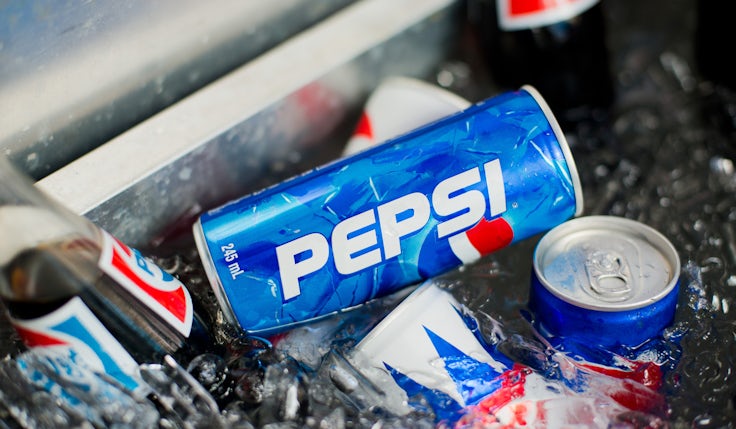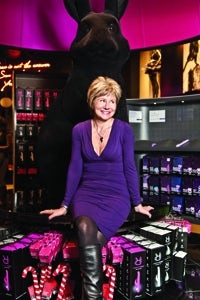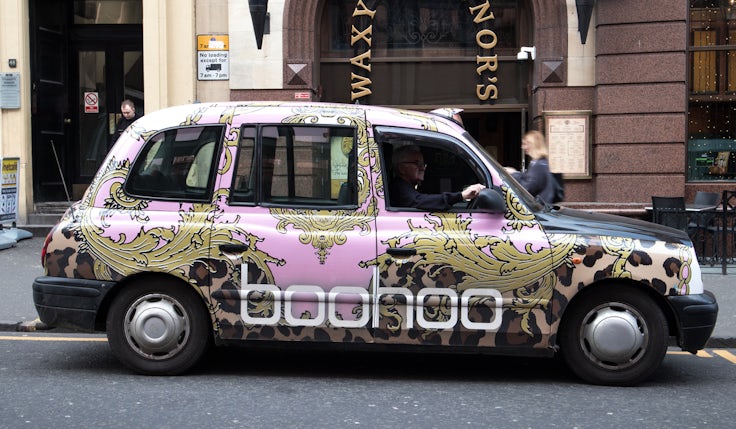PepsiCo: ‘In-housing can improve collaboration with agencies’
PepsiCo Europe marketing director Nancy Croix spoke at a panel at IPA Business Growth Conference on why in-housing doesn’t mean an end to agency relationships – and may even strengthen them.
 PepsiCo marketing director Nancy Croix believes there’s “plenty of work to go around” for creative agencies despite the increasing appetite for in-housing by brands.
PepsiCo marketing director Nancy Croix believes there’s “plenty of work to go around” for creative agencies despite the increasing appetite for in-housing by brands.
Speaking at the IPA Business Growth Conference today (5 July), Croix, a senior marketing director for creative, digital and media at the food and drink giant in Europe, was addressing the trend towards businesses bringing creative teams in-house.
Research produced by the IPA and shared before the panel showed that 58% of marketers believe that in-housing will continue to grow in the coming years. More optimistically for creative agencies 68% of marketers believe their involvement with agencies will remain the same, however, not a single marketer surveyed believes it will deepen.
Croix launched Sips and Bites in 2020, an in-house creative team to sit across its many brands and work closely with external agencies.
Arla Foods and E.ON on finding the right in-housing solution for their brandsShe recalled how when she started the project there were “hundreds of agencies” that worked with PepsiCo on its 70 different brands. While that hasn’t changed drastically, she added, it’s evolving.
“Any company that operates with a house of brands, there’s more than enough work to go around. And more than enough change to generate more work,” she said. “Our model is intentionally a blended mix of in-house and external.”
An example of this new working model can be found with Walkers. Croix explains how her team works with VCCP on the brand and that it’s a little like briefing two clients that one is to be in charge of planning and the other execution. “VCCP are the agency of record on Walkers,” she said. “They are in charge of the brand positioning and if Walker’s, for example, has six campaigns in the year, we split it down the middle between them and us. But we’re in charge of the social. It’s a really interesting blend of creative talents.”
She was keen to stress, too, that this endeavour is not about “growing” the in-house side of the business. Instead it’s to look at the brand team’s problems and find the best solution for them, she says, which usually happens to be a mixture of in-house and external talent.
The hardest thing I’ve had to deal with is the marketers taking things in different tangents rather than agencies.
Matthew O’Brien, Three
Croix has also been keen to not set the two sides up as adversarial to each other and so has removed pitching as part of the creative process. “That’s just a lose-lose situation for me. If I win it will be because we’re the in-house team. And if I lose then we’re not as good as an external team. That’s not a great place to be in and not as a business, too, because we pay twice,” she added.
As to the potential downsides of this strategy, Croix points out that agencies offer a greater level of creative freedom in the range of clients they can work for and that for an ambitious creative talent that is something an in-house operation will struggle to replicate. Something that could lead to higher job turnover.
She said: “If I ask myself: what is it they are missing from working in my team? It will probably be being able to work on something shiny and new, being able to work on a diverse set of brands and diverse set of capabilities.”
“My creative team might leave me for an agency that they feel is very prestigious,” she added.
Three and not-so-easy
This is all well and good at a company as large as PepsiCo who have the budgets to afford such a drastic restructure. It wasn’t as simple for Matthew O’Brien, creative director at Three, who had a lot to do when he was tasked with setting up their in-house creative. Speaking alongside Croix on the panel, he said of the process: “It was principally a cost-saving exercise.”
O’Brien spoke about how when he joined Three it was working with 25 agencies and was a bit like the “wild west” in that anyone could bring in any agency they wanted from their budget and everyone was working in silos.
“Work was basically going off brand, it was chaos, but results were still being delivered so people were happy,” he said. “But value and expenses were going out the door.”
In-housing: The solution to an industry skills gap?He was brought in to reduce that to just two agencies – one to work on advertising campaigns and another on media – but in time O’Brien began to see opportunities for his own team to work on different parts of the business. “We identified different lines of business and channels which we knew we could instantly show value in,” he said. “Starting more downstream with direct response, search, and social content, that kind of stuff.” This identified their value to the C-suite and allowed them the opportunity to work more closely with the agencies on the bigger campaigns, he claimed.
This doesn’t mean the two are in direct competition with each other. “My kind of ethos has always been with the agency that a rising tide lifts all boats,” said O’Brien. “If the above the line agency does great work then we have a benchmark and consistency ourselves that we can start to build.”
As to where any conflict does come from, well, it’s probably the marketing team. “The hardest thing I’ve had to deal with is the marketers taking thing in different tangents rather than agencies,” he concluded.






